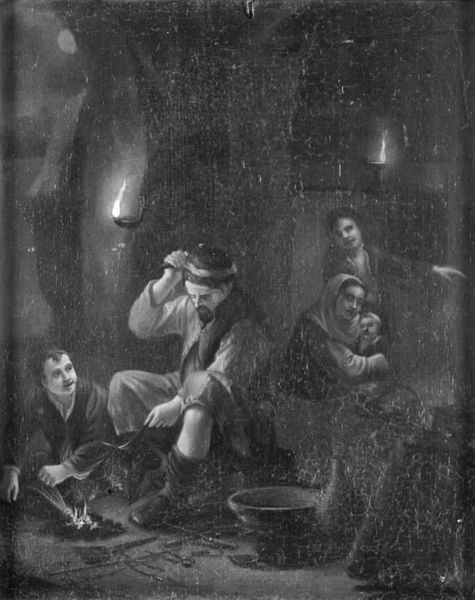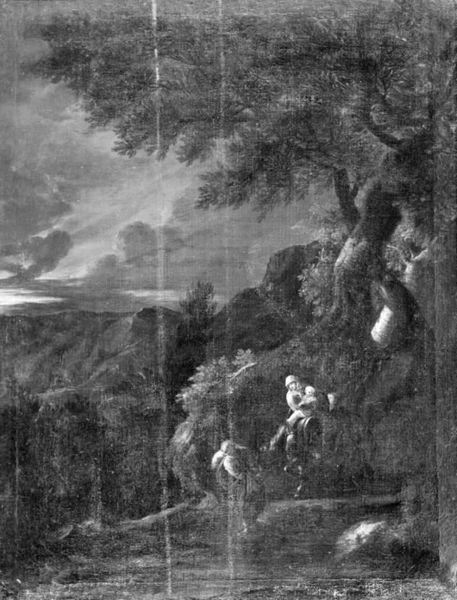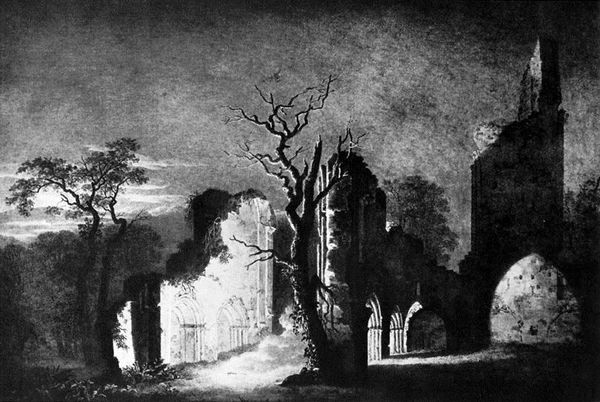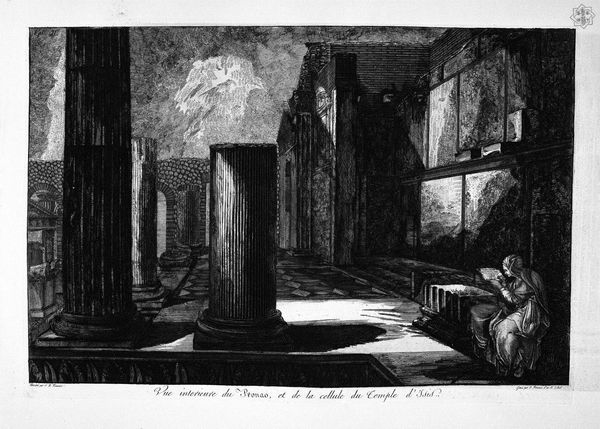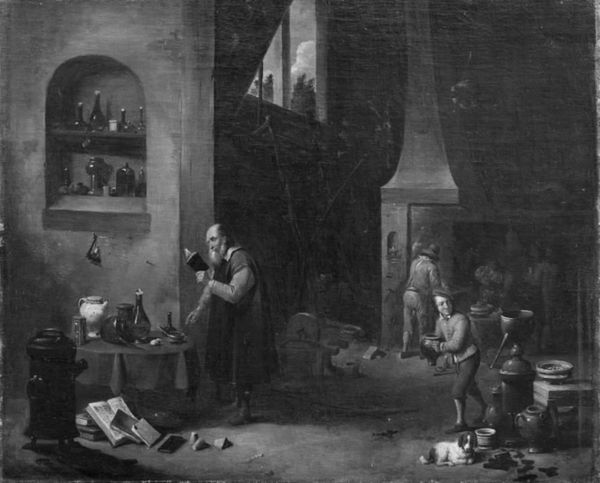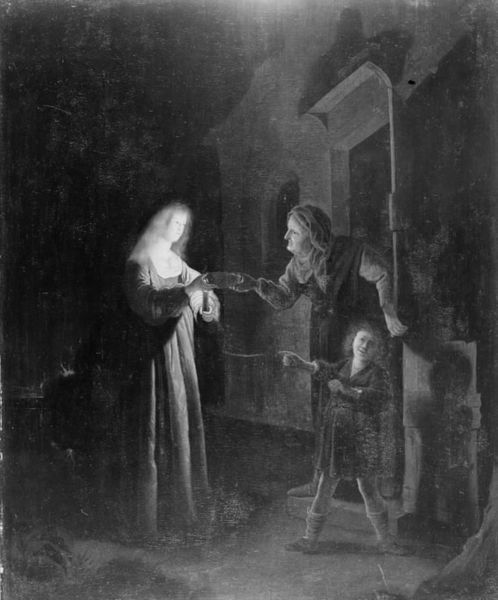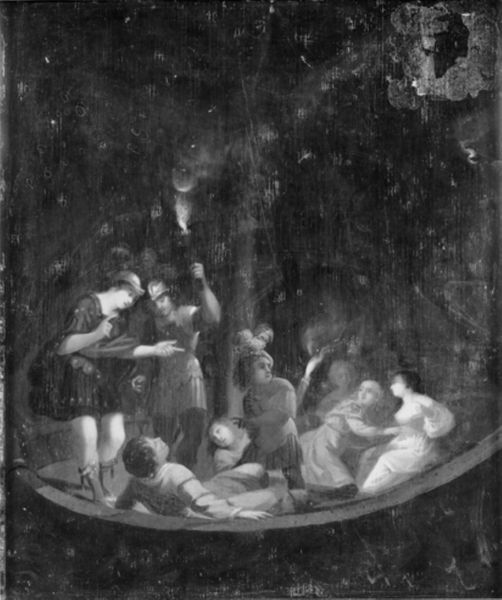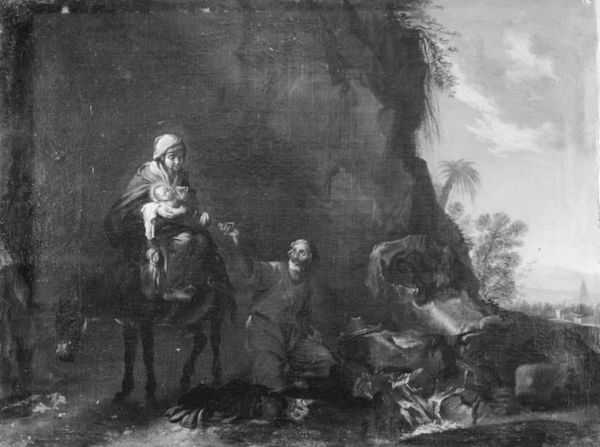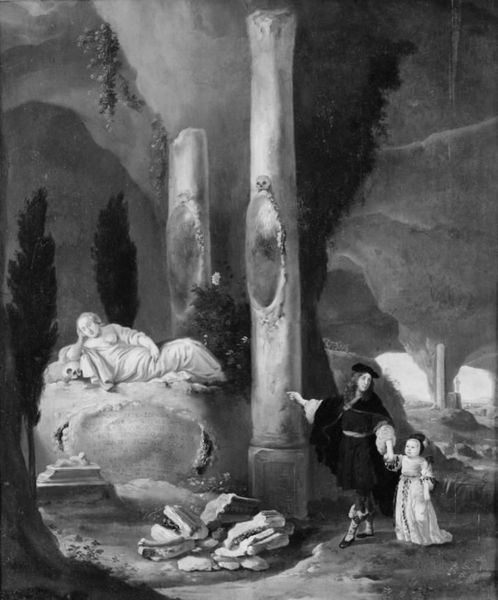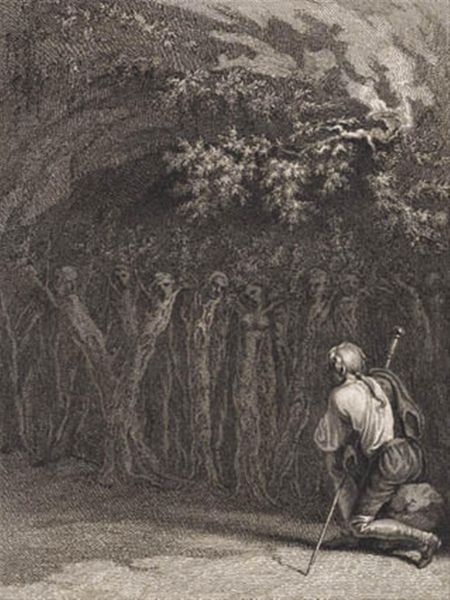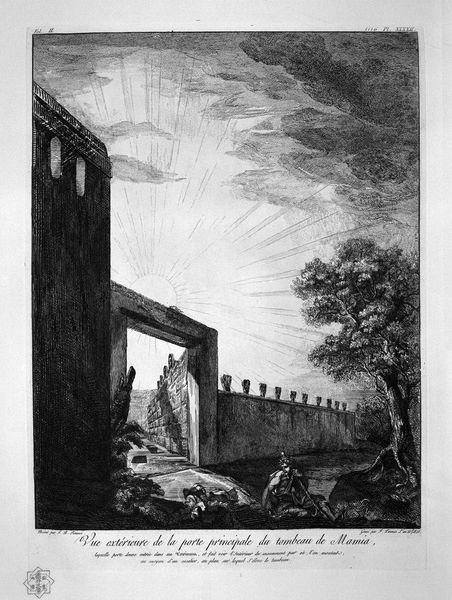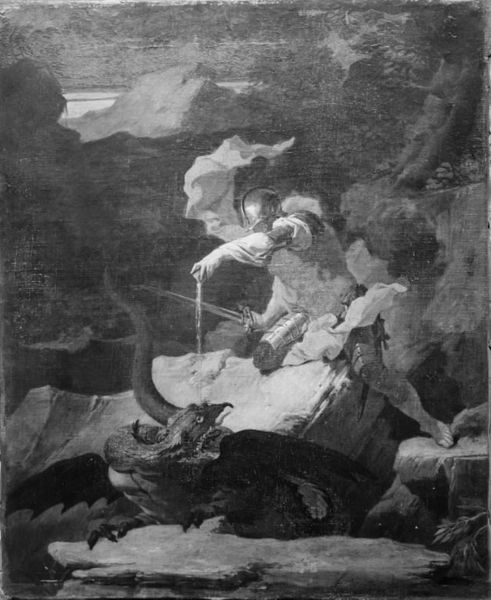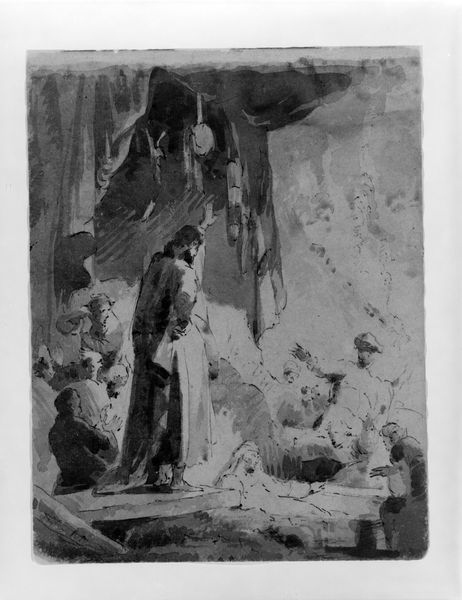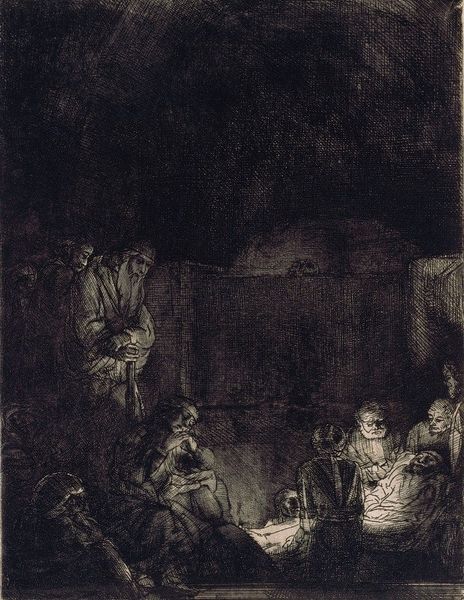
painting, wood
#
portrait
#
narrative-art
#
baroque
#
painting
#
landscape
#
wood
#
cityscape
#
genre-painting
#
monochrome
#
monochrome
Dimensions: 49 cm (height) x 39 cm (width) (Netto)
Editor: So, this is "Returned Family in a Moonlit Square" by Gerrit Lundens, probably painted sometime between 1637 and 1702. It’s on wood, a small painting, and really monochromatic, very atmospheric! What catches your eye when you look at this, perhaps beyond the aesthetic, historian-eye wise? Art Historian: Well, immediately I’m thinking about the socio-political context of image production in 17th-century Netherlands. Genre scenes like this gained popularity because they spoke to the rising merchant class and their values. What stories do such works communicate and perpetuate? Editor: I see. So, beyond the immediate narrative of a family returning home, you’re thinking about who would have commissioned this and what messages they wanted to convey. Art Historian: Precisely. Think about the Dutch Republic. Civic identity, family values were central. The very depiction of the night – with all the unknowns hidden within – as this safe or manageable setting surely appealed. Who does Lundens include as figures and who might be excluded, as potential viewers of his art and also perhaps from society in general? Editor: That’s a good point, I had only focused on how evocative the contrast between the lantern light and the darkness. But the question of who is missing from the square also informs what the picture signifies. Art Historian: It's crucial. How does that detail affect your initial interpretation of it? Are there undertones in it? What assumptions have you, perhaps unconsciously, made about art, public reception, and values based on that information? Editor: Now I am wondering, this family is probably "returned" to safety, away from a possibly dangerous environment or perhaps economic instability, in contrast to whoever cannot benefit from that. Now that is something. Thank you. Art Historian: You are very welcome. Spotlighting cultural narratives gives older pieces new resonances with our current contexts.
Comments
No comments
Be the first to comment and join the conversation on the ultimate creative platform.
